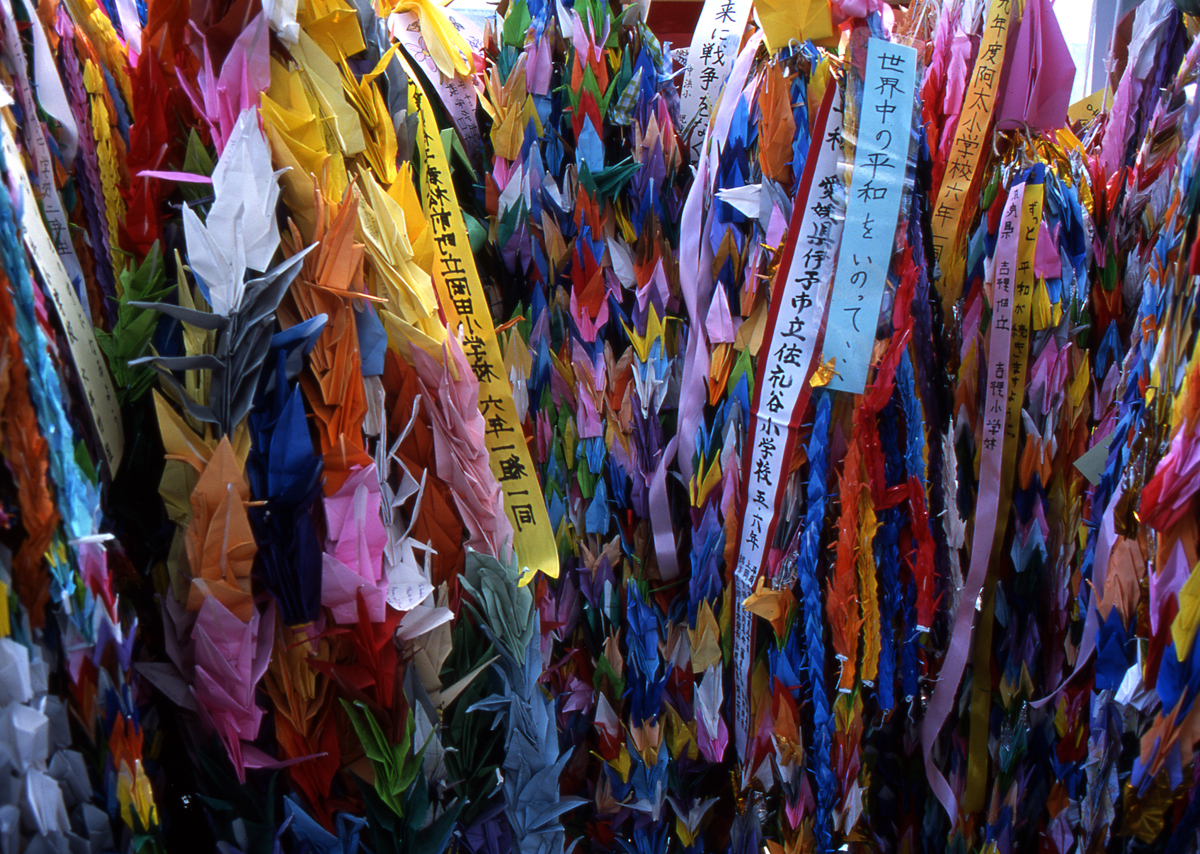The Mayors of Hiroshima and Nagasaki and the 7,700 members of the Mayors for Peace urge that the world remember the devastation and suffering caused by the world’s first atomic bombings. Their goal is both timely and urgent.
Cynthia C. Kelly, founder and president of the Atomic Heritage Foundation (AHF), will be traveling in Japan in February to interview Mayor Kazumi Matsui, President of Mayors for Peace, in Hiroshima on February 14, 2019. She will interview Mayor Tomihisa Taue of Nagasaki on February 18, 2019. In addition, she will interview hibakusha or atomic bomb survivors, and meet with a number of Japanese experts from universities, museums and nonprofit organizations in Hiroshima, Nagasaki, and Tokyo.
Ms. Kelly said, “The Atomic Heritage Foundation is dedicated to educating students and the public about the history of the Manhattan Project and its legacy for today. The stories of Hiroshima and Nagasaki are an integral part of the Manhattan Project history and have important lessons for the world today.”
For a dozen years, the Atomic Heritage Foundation led efforts to create a Manhattan Project National Historical Park. Critics claimed that the new park would celebrate the bomb. In response, the National Park Service has promised to tell the complete story of the Manhattan Project, including the impacts of the bombs on Hiroshima and Nagasaki from the Japanese perspective.
The Manhattan Project National Historical Park was established in November 2015 with three sites: Los Alamos, New Mexico, Hanford, Washington, and Oak Ridge, Tennessee. As “America’s storytellers,” the National Park Service is responsible for interpreting the Manhattan Project for visitors to the new park.
The Atomic Heritage Foundation works closely with the National Park Service, museums and many other partners. Over the past two decades, AHF has created the “Voices of the Manhattan Project” website with over 540 interviews with veterans and experts. The website has become a valuable resource for students, journalists, scholars, TV and documentary film producers, and the public.
With the 75th anniversary of the end of World War II in August 2020, AHF is initiating a project to expand its collection of interviews to include Japanese perspectives and create a series of engaging educational resources for high school teachers and students. The project will provide students a deeper understanding of the history of World War II and its legacy as well as the importance of strong US-Japan relationships today. In addition to students, AHF’s growing online audience will have a more well-informed basis to assess current developments in US-Japan relations regarding national security, nuclear weapons, globalization, and other issues.
The trip to Japan provides a valuable opportunity to visit both Hiroshima and Nagasaki and meet with the Mayors, hibakusha, and leading Japanese scholars and other experts. AHF looks forward to gaining a deeper appreciation of the perspectives of the Japanese people, the impact of the atomic bombings and their lessons for today.
As President Barack Obama said when visited Hiroshima on May 27, 2016: “Why do we come to this place, to Hiroshima? We come to ponder a terrible force unleashed in a not-so-distant past. We come to mourn the dead, including over 100,000 Japanese men, women and children, thousands of Koreans, a dozen Americans held prisoner….Their souls speak to us. They ask us to look inward, to take stock of who we are and what we might become.”
AHF hopes to prompt young people to take stock and reflect on the lessons of Hiroshima and Nagasaki. Nearly 75 years later, we must grapple with the reality that nuclear weapons remain as much of a threat as ever before. In partnership with universities and many other organizations in the US and Japan, AHF is confident that the project will produce valuable resources for educators, students and the general public.





